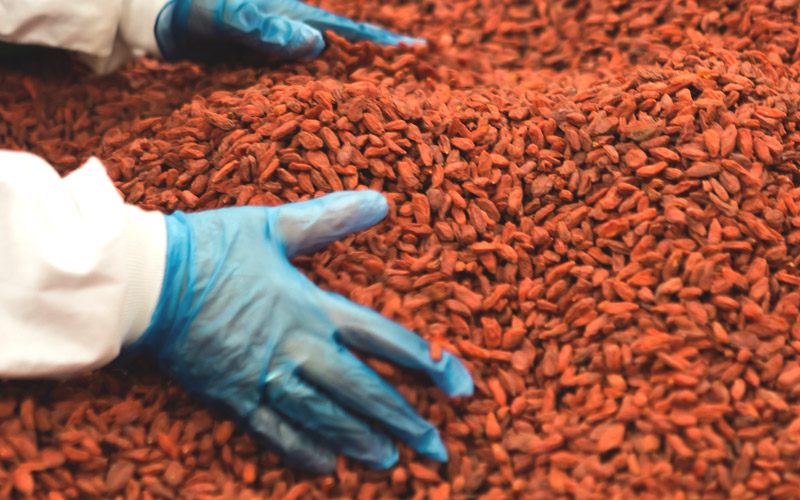The UK food system – Coronavirus’ legacies.

The World has been severely jolted by Coronavirus. Bio-security has come to the fore like a science fiction novel. In the space of five month this invisible bug has taken a firm hold. For the food industry Coronavirus is likely to leave a quite indelible mark, which will be a notable threshold in the industry’s history.
The hidden curriculum
The official and unofficial behavioural change from Coronavirus is startling. Who would have thought that virtually the whole of the British Isles and Continental Europe could be kept house bound with incredibly low levels of non-compliance! That compliance to official guidance and the messages therein may have considerable implications for how society, and so the UK food system, emerges from the Coronavirus crisis.
Alongside very high compliance it appears that anxiety towards post-lockdown is high as the UK Government explores its strategy and communications for the next phase of the crisis. Indeed, those clamouring for an exit strategy – the BBC, the Opposition parties and elements of commerce – may be hushed somewhat when they see an Ipsos poll suggesting that c60% of Britain’s are anxious about relaxing lockdown whilst Opinium in The Guardian cite such levels of concern at over 80% with less than 10% of the poll happy to see pubs re-open.
Structural change for HORECA
Such attitudes are crucial to the prospects of the UK food system. Prior to lockdown about 35-40% of calories consumed in the UK emanated from the food & beverage (F&B) or HORECA (hotels, restaurants & catering) sector. Since lockdown such out of the home calorific intake has retrenched largely to the institutional market of care homes, hospitals and prisons, so maybe 10%+. Accordingly, the retail trade has benefited from the switchover, more of which a little later.
How unlocking goes in the UK is going to be key for the HORECA sector and three big challenges are ahead; a) social distancing for workers in often galley kitchen conditions, b) social distancing for customers and c) the propensity for the customer base to consider the return to the bar, cafe, coffee shop or restaurant, never mind night club or football stadium?
As such, it feels like it will be sometime before the British will be consuming c37.5% of its calorific intake outside the home, which implies considerable operational and structural change for F&B providers, many of which were far from financially robust prior to lockdown, their supply chain and the landlords that owned their property.
“The one clear area of the grocery trade to benefit from the behavioural changes driven by Coronavirus is online. It took over twenty-three years for the industry to reach an online grocery participation of seven per cent. Through a little more than eight weeks, Sainsbury’s has recorded c15% participation, driven by larger basket sizes (c50%) and a doubling of capacity.”
Re-born supermarkets
Those switched calories from F&B are expected, as alluded to above, to switch to the retail segment, which is good news for supermarkets and their supply chains. Whilst this is so, there are also notable moving parts within these components of the food system too.
Coronavirus has been a boon to large and small stores alike and also the online grocery channel. The squeeze in retail is the food-to-go and food-for-now segments, and here the challenges could also be structural. Coronavirus has led to a structural change in home-working, facilitated by technological change, that is likely to see a notable reduction in commuting.
It is also likely that business travel will be structurally lower in future years as executives eschew the aeroplane whilst technology, again, has reduced the need for marginal and nice to have journeys. Airports, bus stations and railway hubs are likely to see lower footfall with more home-working, which will weigh down on the impulse food market.
Nervousness about being in crowds and home working is, therefore, likely to result in a switch from calories consumed in urban centres to the suburbs, so boosting neighbourhood stores like the Co-op, Londis, McColl’s and SPAR. Equally, with social distancing in-tow, basket shopping, which has been a key feature of the UK grocery market in recent years, maybe partially, perhaps notably, offset by trolley shopping; the latter of which bolsters the relevance once again of superstores (albeit hypermarkets with their large non-food areas may still be a little skew-whiff from a magnetic perspective) – the functional benefits of the large and suburban stores means that the German discounters are not quite at the heart of lockdown retailing albeit they are not going away.
Online moves to the right
The one clear area of the grocery trade to benefit from the behavioural changes driven by Coronavirus is online. It took over twenty-three years for the industry to reach an online grocery participation of seven per cent. Through a little more than eight weeks, Sainsbury’s has recorded c15% participation, driven by larger basket sizes (c50%) and a doubling of capacity.
For the elderly, switched onto digital through necessity by family & friends, and the vulnerable, now prioritised by the supermarkets, the online channel is new and here to stay. Hence, there would appear to be a shift to the right for food and non-food channel participation, maybe from c7% to 10%+. The supermarkets are likely to harness this growth given the capacity constraints experienced at Ocado, with its more rigid centralised business model.
Chrissy Hynds of Pretenders’ fame proclaimed that ‘somethings change, some stay the same’ and this feels apt with respect to Coronavirus and the UK food system. Post-lockdown many folks will shrug the bug off and go about life with gay abandon. However, and here’s the change, many will not. For the F&B sector and its supply chain this is a structural challenge that is likely to reduce the run-rate of growth, which was approximately twice that of retail for some years, and so demand and therefore supply.
For retail there is likely to be some beneficial switching, which will increase ongoing demand in an industry where supply is growing very modestly – circa 1% per annum – but with considerable moving parts in the form of lesser food-to-go and basket shopping over neighbourhoods and trolleys. The clear ‘winner’ channel wise is online, which is going to go through a gear.
Costs, cash and focus…
Time will, of course, tell us what the real legacies of the Coronavirus crisis will be. For business, the nature, duration and extent of UK Government support is going to be important to the failure rate in F&B and so the emerging structures that the distorted market economy produces. For retail, it has been rejuvenated, a key sector with key workers, central to feeding the nation and preventing social breakdown, on which we gained glimpses in unedifying stockpiling in March.
One senses that very tight cost control and cash management are going to be centre of attention for operators in the British food system here on. Maximising the potential of operations at the coal face is where Coriolis excels. As the freeze thaws I wish to you all well in these truly unprecedented times.
Dr Clive Black
Senior Advisor to Coriolis Consulting
May 2020








